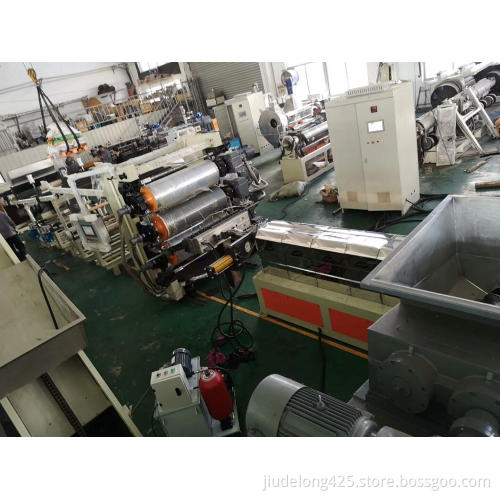
JDL150 Single screw extruder
Your message must be between 20 to 2000 characters
Contact NowJDL150 Single screw extruder
The transmission system we use ac variable frequency motor and ordinary gear reducer.
Heating system: adopts the method of resistance heating
Heating power: 30 kw
Hanger type structural sheet die head
Use quality and durable stainless steel heating bar to control heating
Production of 0.5-6mm thick sheet products
Advantages:stable capacity , structure is simple.
is easy for disassemble and clean
Single screw extruder principle
Most screws have these three zones:
Feed zone (also called the solids conveying zone): this zone feeds the resin into the extruder, and the channel depth is usually the same throughout the zone.
Melting zone (also called the transition or compression zone): most of the polymer is melted in this section, and the channel depth gets progressively smaller.
Metering zone (also called the melt conveying zone): this zone melts the last particles and mixes to a uniform temperature and composition. Like the feed zone, the channel depth is constant throughout this zone.
In addition, a vented (two-stage) screw will have:
Decompression zone. In this zone, about two-thirds down the screw, the channel suddenly gets deeper, which relieves the pressure and allows any trapped gases (moisture, air, solvents, or reactants) to be drawn out by vacuum.
Second metering zone. This zone is similar to the first metering zone, but with greater channel depth. It serves to repressurize the melt to get it through the resistance of the screens and the die.
Often screw length is referenced to its diameter as L:D ratio. For instance, a 6-inch (150 mm) diameter screw at 24:1 will be 144 inches (12 ft) long, and at 32:1 it is 192 inches (16 ft) long. An L:D ratio of 25:1 is common, but some machines go up to 40:1 for more mixing and more output at the same screw diameter. Two-stage (vented) screws are typically 36:1 to account for the two extra zones.
Each zone is equipped with one or more thermocouples or RTDs in the barrel wall for temperature control. The "temperature profile" i.e., the temperature of each zone is very important to the quality and characteristics of the final extrudate.
Related Keywords












